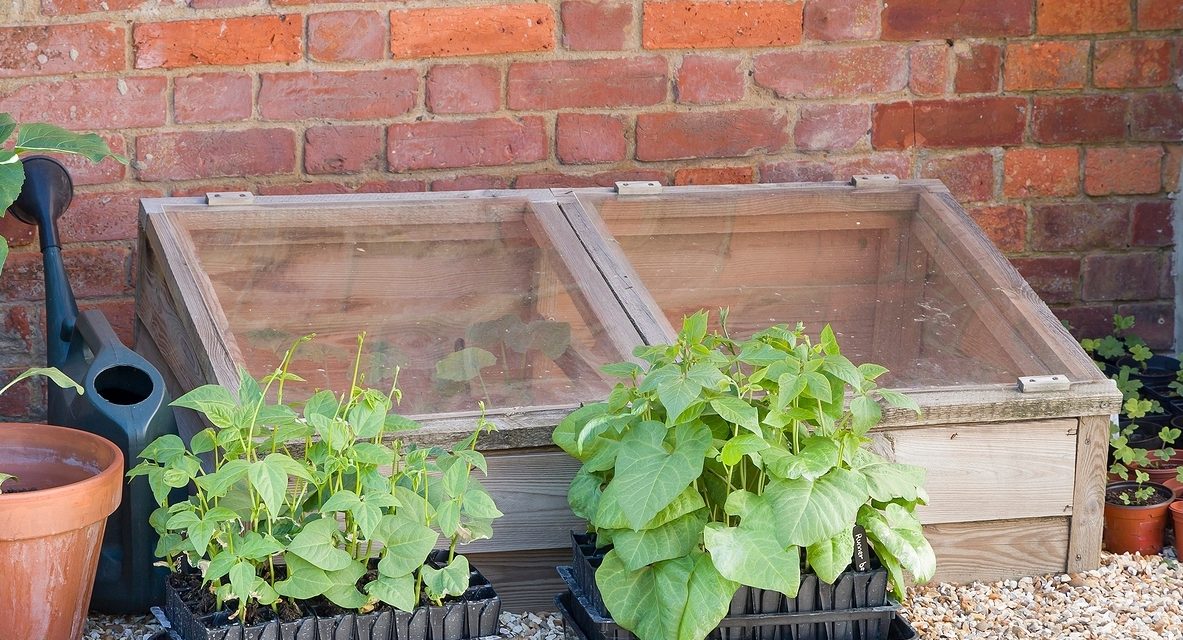One of the best things about fall gardening in Oklahoma are all of the fresh greens. Store-bought greens just can’t compare. What comes out of those cellophane bags is gross! If you like fresh spinach, lettuces, kale, collards, Swiss chard and others then this is your moment. Prepare now to celebrate over some of the most delicious (and nutritious) meals you will ever grow.
Greens are pretty easy because you can grow them in so many different types of gardens. They do well in row gardens, raised beds, containers or even whimsical, ornamental pots. However, if you are serious about your greens, you might want to consider building a cold frame.
Cold frames are an easy and inexpensive way to extend your growing season, and they allow you to enjoy fresh greens deep into the cold winter months. These outdoor frames protect your plants from frost and damaging winds while allowing in the warm sunlight. They can be made from a variety of materials and built in an elaborate manner or as a smaller, budget-friendly one. They are super easy projects for DIYers, so you do not need a lot of construction experience. Cold frames do not require electricity, as they are typically unheated, and you can grow a lot of greens in a small space. This is not a project that will require a large amount of money, space or materials.
To make your own cold frame consider the following:
The Location—You will need to position your cold frame, so that it can receive the maximum amount of sunlight and also be in a place where you have easy access to it.
The Bottom—Cold frames usually do not have a bottom. The ground itself serves as the bottom. If you are planning to build a cold frame for your patio or balcony then you could use a well-insulated container filled with soil as your bottom.
The Sides—Your sides can be made of any materials that will support the top. Square hay bales, concrete blocks, tires and lumber are common materials that people use. Whatever material you choose, it needs to be something that is thick and insulating and able to provide protection from cold weather.
The Top—The top needs to be something that will allow sunlight to penetrate. Old glass doors and windows are the best options, or you can use plexiglass or a heavy mil plastic.
Too Hot—Remember, you are growing cool weather greens. They don’t like it very hot, so if your thermometer reads 50 degrees Fahrenheit or above, crack the top or remove it completely.
Too Cold—Even though greens can tolerate temperatures that are quite chilly, they do not grow well when it is below 40 degrees Fahrenheit. When the thermometer reads 50 degrees Fahrenheit or below, make sure that you have your top securely on. If it is freezing, sleeting or snowing, we will sometimes even throw an old quilt or tarp over the entire cold frame for the day. Be sure to uncover it the next day, so that you can capture all of the available sunlight. By spring you will be able to leave the top off for longer periods of time.
You may be thinking, “Are cold frames really worth the effort?” Simply stated, YES! With just a little effort on the front-end, these structures act as a refuge and provide shelter for your greens, allowing your plants to remain strong and healthy. They allow you to continue gardening even after the weather tells you to quit, and because of cold frames, you are able to eat fresh much longer.
Just as cold frames protect our plants from harsh winter weather, our loving Heavenly Father is a strong shelter that protects us as we navigate life’s harsh situations. Day by day, as we plant ourselves within the protection of His loving care, we are able to grow stronger and healthier lives. He loves and takes care of us. He is our Refuge!
As winter approaches, rejoice in the greens you grow and also in the Good God you trust!
“But rejoice, all who take refuge in You; Sing for joy forever! And may You shelter them, that those who love Your name may rejoice in You” (Psalm 5:11).





